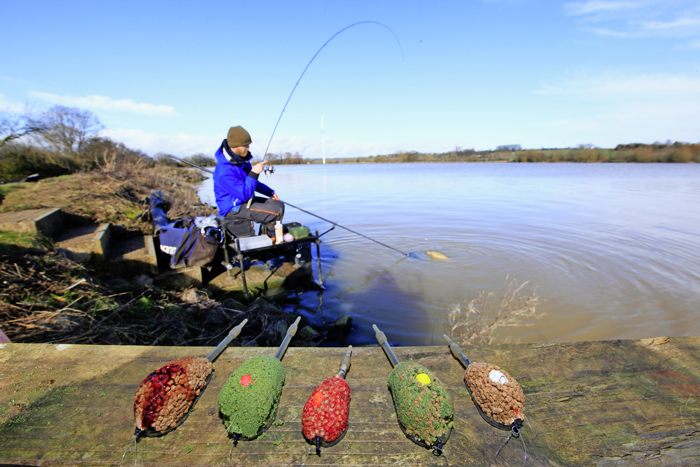How to plumb the depth correctly when fishing
BY TOMMY PICKERING, FORMER WORLD CHAMPION
At this time of year, finding the correct depth to fish at is very important – being as little as an inch overdepth or off bottom can produce only a handful of bites, whereas the angler who is bang on the money will catch more.
Plumbing accurately not only ensures that your bait is on the bottom, but also lets you know of any changes in contour to the swim such as shelves or deeper holes, which can be a magnet to fish.
Using a plummet properly will also highlight what the bottom of the lake is made up of – silt, gravel or mud. This will go a long way towards helping you decide your tactics on the day.
Plummet size
For pole fishing there’s only one size of plummet you’ll need, and that’s a heavy one! I use around 30g for enough weight to let me feel when the plummet has hit the bottom. Too light and you won’t get the feel and a true reading.
A heavy plummet will also sink into any silt or mud and you’ll know this when you lift the pole – the plummet will ‘stick’ slightly before being freed.
Accuracy at all times
Having reference points when plumbing the depth is vital, so you know that you are fishing the right spot. Don’t rush things – time spent plumbing up means more fish in the long run.
I will pick something such as a far-bank tree as a marker to line the pole up against. To ensure the distance is correct, hold the pole as you would when fishing.
Plumb around
Although the name of the game is to find the depth in one spot, it does no harm to drop in a foot or so either side of this area or just past it. There can be a change in depth just inches away from your starting point and this change, especially if it is deeper, can be home to more fish on harder days.
On the waggler
Finding the depth on the waggler is different to the pole because you won’t have the pole directly above the float. It is still possible to get a very accurate reading, but I don’t use a standard large plummet.
Instead, I pinch a large SSG or double SSG shot on the hook and cast out, allowing up to 20 or 30 seconds for the angle of the line from rod to float to be taken into account. I then add an inch at a time to the depth until I can see the float tip and then begin to work backwards by a centimetre at a time until I have dead depth.











